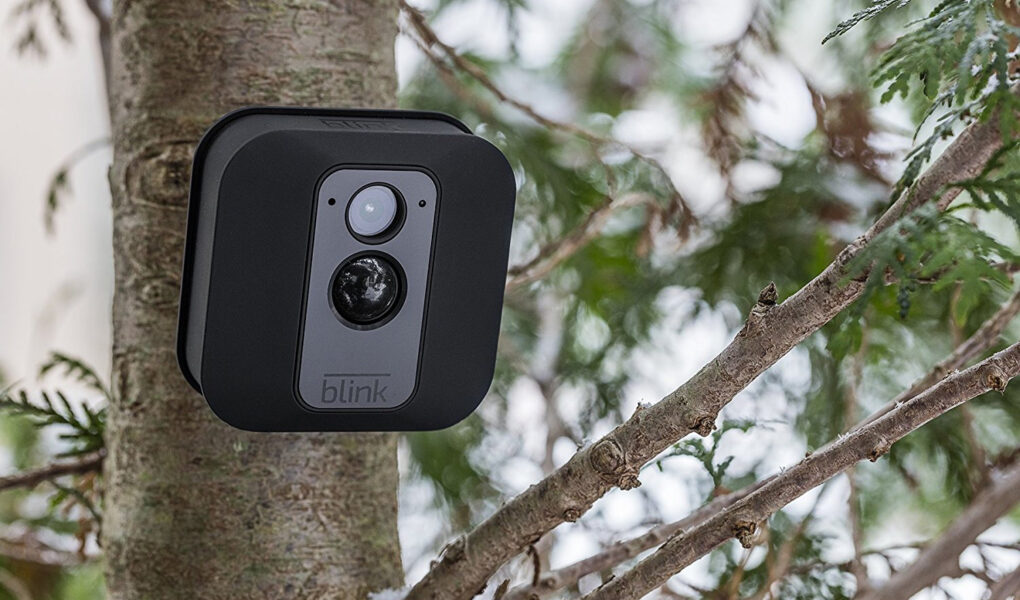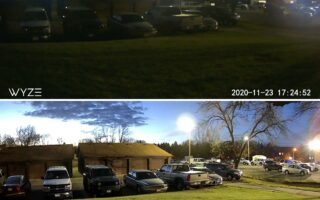Owning a security camera is a present-day need. Not only does it ensure optimal security, but having a Blink camera in place also reduces the risks of potential attacks, theft, or burglary. However, the primary function of a security camera is to detect motion and eliminate potential hazards.
What happens when your Blink camera stops detecting motion? There could be multiple reasons why the Blink camera isn’t detecting motion. From low sensitivity settings to wrong IR settings, there could be several reasons your Blink camera isn’t detecting motion.
For your convenience, we have sorted the top 6 reasons alongside effective resolutions to fix the errors.
Reasons Why Blink Cameras May Not Detect Motion and Their Solutions
Blink cameras are high-tech security cameras programmed with all the latest features and functionalities that can help you stay alert to your surroundings throughout the day and night.
This section of the article will explore the top reasons and clarify potential fixes that you can follow to fix the issue for good.
1. Placement Issues
The most common reason your Blink camera isn’t detecting motion is placement issues. If the camera isn’t placed in a good area and is surrounded by restrictions, that’s potentially the main reason why the Blink camera isn’t getting enough flexibility to move and detect motion.
Ideally, place the camera somewhere that provides the Blink camera with a clear line of view. If obstructions are on any side of the Blink camera, it will restrict the camera’s movement, leading to issues.
The following are a few scenarios worth exploring.
a. Improper Camera Positioning
If the camera isn’t positioned correctly, the easiest fix is to adjust the camera angle to offer better coverage of the surroundings.
b. Obstructions in the Camera’s Field of View
Sometimes, issues with the field of view of the Blink camera can affect the motion detection features. The easiest way to fix that is by clearing any obstructions blocking the camera’s view.
c. Insufficient Camera Angle Adjustment
When installing the Blink camera, the first is to install it to be appropriately adjusted to cover the desired area in the surroundings.
2. Distance Limitations
Another factor that could be affecting the motion detection feature of the Blink camera is distance limitations. If the subject is too far from the camera, that will prevent optimal motion detection.
a.Camera Too Far from the Object
If your camera is too far from the subject that the camera is detecting, that’s another potential reason why the motion detection isn’t working as it should. In that case, you can relocate the camera close to the intended monitoring area.
This will improve the camera’s ability to capture details and provide better monitoring coverage of the desired area.
b. Limited Range of Motion Detection
Motion detection is an essential feature of security cameras, allowing them to trigger recordings or alerts when movement is detected. However, some cameras may have limitations in their range of motion detection.
If the same is the case with your Blink camera, you can use the Blink sync module in the app to fix and improve the range of motion detection of the device.
Sync Modules act as hubs for Blink cameras and extend the coverage range. By strategically placing additional Sync Modules within your monitoring setup, you can expand the motion detection capabilities and cover a larger area.
Also Read – Why is My Blink Camera Flashing Red? [Reasons and Fixes]
3. Environmental Factors
The standard settings and even external or environmental factors can often contribute to why your Blink camera isn’t working as it should.
a.Extreme Weather Conditions
Extreme weather conditions, including heavy rain, high temperatures, and snow, will eventually affect the camera’s functionalities and performance. Fixing a shield or cover on top of the camera will protect the camera against direct exposure to harsh components.
You can also weatherproof the area where the Blink camera is attached. This will ensure reliable operation during harsh weather conditions.
b. Glare or Reflections
Glares or reflections are typically formed by sunlight or even from car lighting or artificial lighting in close vicinity. It can trigger false alarms and make motion detection a lot more confusing and complicated.
One of the easiest ways to fix this issue is by using anti-glare covers or filters specifically designed for your camera model, which can help reduce glare’s influence and improve motion detection accuracy.
c. Foliage or Trees Triggering False Alarm
Sometimes, we don’t realize this, but the foliage and the trees near the Blink camera might trigger false alarms. If you have plants and trees close to the camera, it’s crucial that you immediately cut the edges and shorten the intrusive foliage that’s triggering the false motion detection.
Another option is to adjust the motion detection zones to exclude areas with excessive movement caused by trees or foliage.
Also Read – How To Power Cycle Wyze Camera: Step-by-Step Guide
4. Camera Settings
Moving ahead, another common reason potentially contributing to the Blink camera’s faulty motion detection is due to the camera settings. There are a few situations and excerpts worth cross-checking in that case:
a.Sensitivity Settings Not Adjusted
Motion sensitivity settings determine how sensitive the camera is to detect motion. If the sensitivity is too high, it may result in false positives and trigger unnecessary alerts. Conversely, the camera might not detect important motion events if it’s too low.
You must address the issue immediately and implement relevant fixes to ensure the desired level of motion detection in your Blink camera.
The settings can be adjusted from the app connected to your smartphone. You can select the device and change the settings based on personal preferences and requirements.
b. Motion Detection Zones Not Configured Correctly
Many cameras offer the ability to define specific motion detection zones. These zones determine where the camera should monitor motion and trigger alerts or recordings. This is a functionality that’s available in your Blink camera too.
Your work is to ensure that you are configuring your Blink camera’s required motion detection zones so it performs optimally and without any restrictions along the way. If needed, we’d suggest customizing the settings directly from the app.
c. Outdated Firmware Affecting Motion Detection Performance
Firmware updates often include bug fixes, feature enhancements, and performance improvements for the camera. If you haven’t updated your Blink camera’s firmware in a while, you must do so without fail.
This ensures that your camera is equipped with the latest improvements and optimizations, including motion detection performance
Also Read – Fire Stick Remote Blinking Orange – Fixing Stick Remote: Blinking Orange – Easy Solutions!
5. Power-related Issues
The penultimate reason why your Blink camera isn’t performing as it should and isn’t detecting motion optimally is due to power-related issues. There are a few different reasons that deserve to be checked out.
a. Low Battery
If the Blink camera you use is battery-powered, be it from a continuous power outlet or the standalone AA or AAA batteries, you must check the battery status. In most cases, the low-battery status can affect functionality or lead to a complete shutdown.
The easiest fix for that is to either recharge your battery immediately for a quick fix, or you can go ahead and change the batteries if you have run out.
b. Power Interruptions
Power interruptions can disrupt the camera’s motion detection capabilities and lead to gaps in monitoring coverage.
The first thing you need to do is cross-check the power source the camera is connected to and ensure that it’s reliable. Use an uninterruptible power supply (UPS) system to provide the camera’s power source is never disconnected.
6. Technical Glitches
Last but not least, the technical glitch contributes to a false Blink camera motion detection. These kinds of buffers can lead to poor camera performance.
a.Software Bugs or System Errors
Software bugs or system errors can impact the camera’s functionality and motion detection capabilities. It’s crucial to keep the Blink app and camera software up to date to ensure you have the latest bug fixes, performance improvements, and feature enhancements.
b. Connectivity Issues
Connectivity issues can disrupt the camera and monitoring system communication, leading to unreliable motion detection or monitoring performance. To address this problem, start by checking your network connectivity. Ensure that your camera is connected to a stable and reliable Wi-Fi network.
Conclusion
Your Blink camera not detecting motion is a major fault on the device. After all, you have installed the camera to ensure optimal security and alert you about possible dangers in the surroundings. If the camera isn’t doing what it’s supposed to, there’s no point having it in the first place. We have addressed all the crucial factors and the associated fixes to optimize the functionality of the Blink camera.




